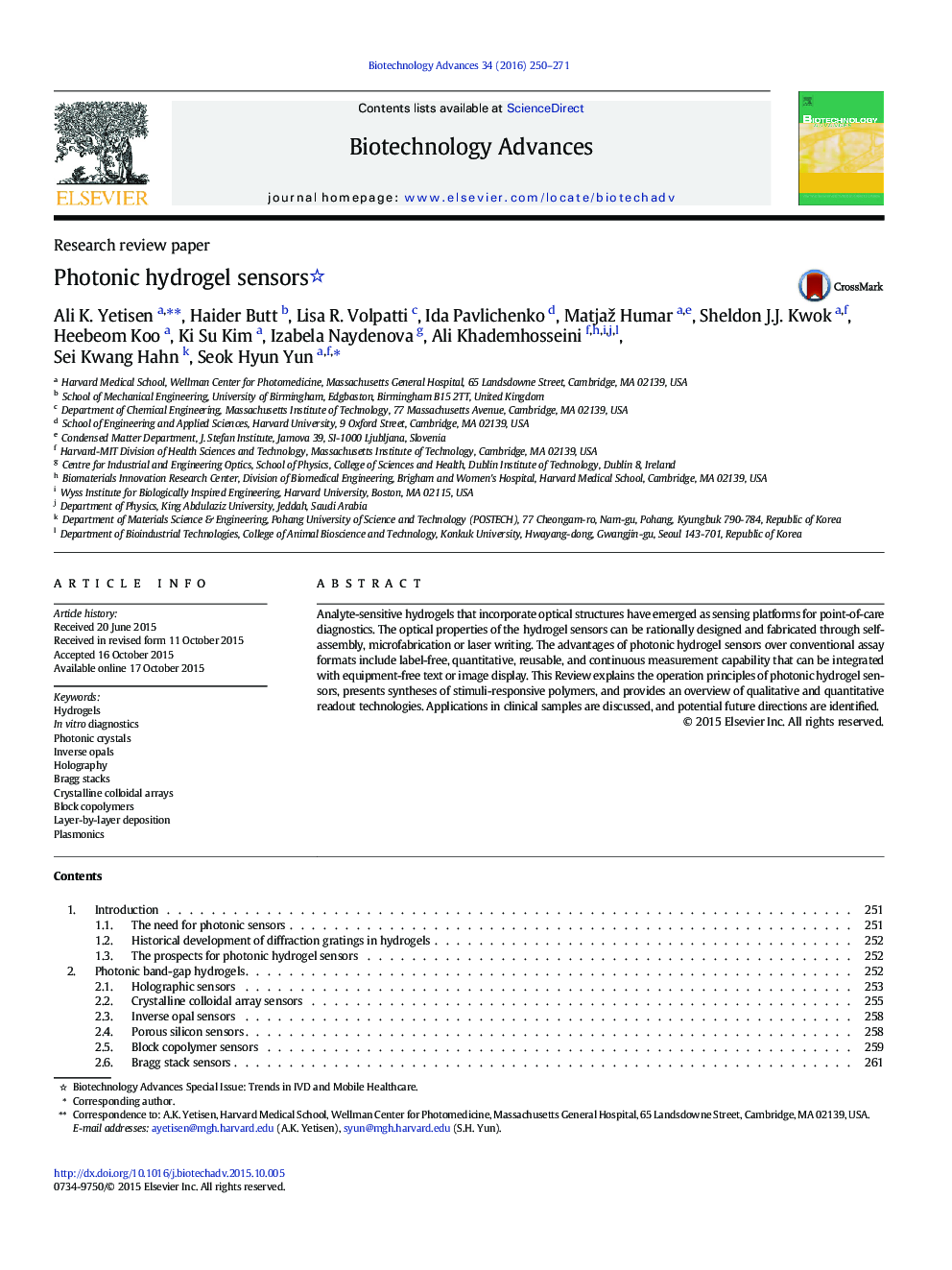| Article ID | Journal | Published Year | Pages | File Type |
|---|---|---|---|---|
| 14204 | Biotechnology Advances | 2016 | 22 Pages |
•Explains the operation principles of photonic hydrogel sensors•Discusses holographic gratings, opals, porous silicons, block copolymers, Bragg stacks, and plasmonic composites•Provides an overview of self-assembly and nano/microfabrication techniques•Demonstrates clinical applications in point-of-care diagnostics•Describes perceived limitations in sensing and provides guidelines for future work
Analyte-sensitive hydrogels that incorporate optical structures have emerged as sensing platforms for point-of-care diagnostics. The optical properties of the hydrogel sensors can be rationally designed and fabricated through self-assembly, microfabrication or laser writing. The advantages of photonic hydrogel sensors over conventional assay formats include label-free, quantitative, reusable, and continuous measurement capability that can be integrated with equipment-free text or image display. This Review explains the operation principles of photonic hydrogel sensors, presents syntheses of stimuli-responsive polymers, and provides an overview of qualitative and quantitative readout technologies. Applications in clinical samples are discussed, and potential future directions are identified.
